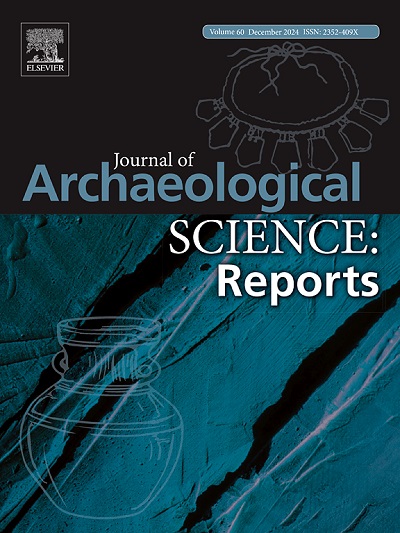利用无人水面航行器(USV)进行海洋地质考古制图。案例研究:希腊格罗塔纳克索斯的古代半淹没定居点
IF 1.5
2区 历史学
0 ARCHAEOLOGY
引用次数: 0
摘要
随着技术的发展,水下文化遗产的调查、探索和记录工作正迅速进入一个新的时代。海洋遥感技术能够对研究区域采取适应的办法,克服传统手段的困难和限制,并以非侵入性、非破坏性的方式行动。本研究是一项海洋地质考古调查,其案例研究是希腊基克拉迪群岛纳克索斯古城北部沿海地带格罗塔的半淹没遗址。为了满足该遗址在超浅水(0至- 5米)存在文物的特殊需求,使用双体船无人水面车辆(USV)同时检索浅层地球声学数据和视觉镜头,配备了声学和光学传感器。对收集到的声学数据集进行处理,以创建高分辨率和度量精度的水深视图和地理参考马赛克,以绘制和调查淹没的住宅遗迹。此外,摄影测量方法还被用于创建位于海底的古代建筑的3D模型和正射影成像,以便更好地记录它们的个体特征。这两个声学数据集都被纳入GIS软件,其中不同的空间信息被用来生成研究区域的结论性地图。本次实地研究旨在展示USV在具有挑战性的环境下的适应性使用,用于水下考古遗址的勘探和记录,以及在不破坏海洋文物的情况下同时获取多层次信息。本文章由计算机程序翻译,如有差异,请以英文原文为准。
Marine geo-archaeological mapping using Unmanned Surface Vehicle (USV). Case study: ancient semi-submerged settlement of Grotta Naxos, Greece
The surveying, exploration and documentation of underwater cultural heritage (UCH) sites are rapidly entering a new era with the evolution of technology. Marine remote sensing techniques enable an adapted approach to the study area, overcoming the difficulties and limitations of conventional means and acting in a non-intrusive, non-destructive manner. This research is a marine geo-archaeological survey the case study of which is the semi-submerged site of Grotta, the north coastal zone of the ancient city of Naxos, Cyclades, in Greece. To meet the peculiar needs of the site with the presence of antiquities in ultra-shallow waters (0 to −5 m), a catamaran Unmanned Surface Vehicle (USV) was employed for the concurrent retrieval of shallow geoacoustic data and visual footage, equipped with acoustical and optical sensors. The collected acoustic datasets were processed to create bathymetric view and georeferenced mosaics of high-resolution and metric precision to map and investigate the submerged residential remains. Additionally, photogrammetric methods was applied for creation of 3D models and orthophotomosaics of the ancient structures located on the seabed, facilitating a better record of their individual characteristics. Both acoustic datasets were incorporated into GIS Software, where diverse spatial information was utilized to generate conclusive maps of the study area. This field research aims to demonstrate the adaptive use of USV’s in challenging environments for the exploration and documentation of underwater archaeological sites and the simultaneous acquisition of multi-level information without damaging the marine antiquities.
求助全文
通过发布文献求助,成功后即可免费获取论文全文。
去求助
来源期刊

Journal of Archaeological Science-Reports
ARCHAEOLOGY-
CiteScore
3.10
自引率
12.50%
发文量
405
期刊介绍:
Journal of Archaeological Science: Reports is aimed at archaeologists and scientists engaged with the application of scientific techniques and methodologies to all areas of archaeology. The journal focuses on the results of the application of scientific methods to archaeological problems and debates. It will provide a forum for reviews and scientific debate of issues in scientific archaeology and their impact in the wider subject. Journal of Archaeological Science: Reports will publish papers of excellent archaeological science, with regional or wider interest. This will include case studies, reviews and short papers where an established scientific technique sheds light on archaeological questions and debates.
 求助内容:
求助内容: 应助结果提醒方式:
应助结果提醒方式:


